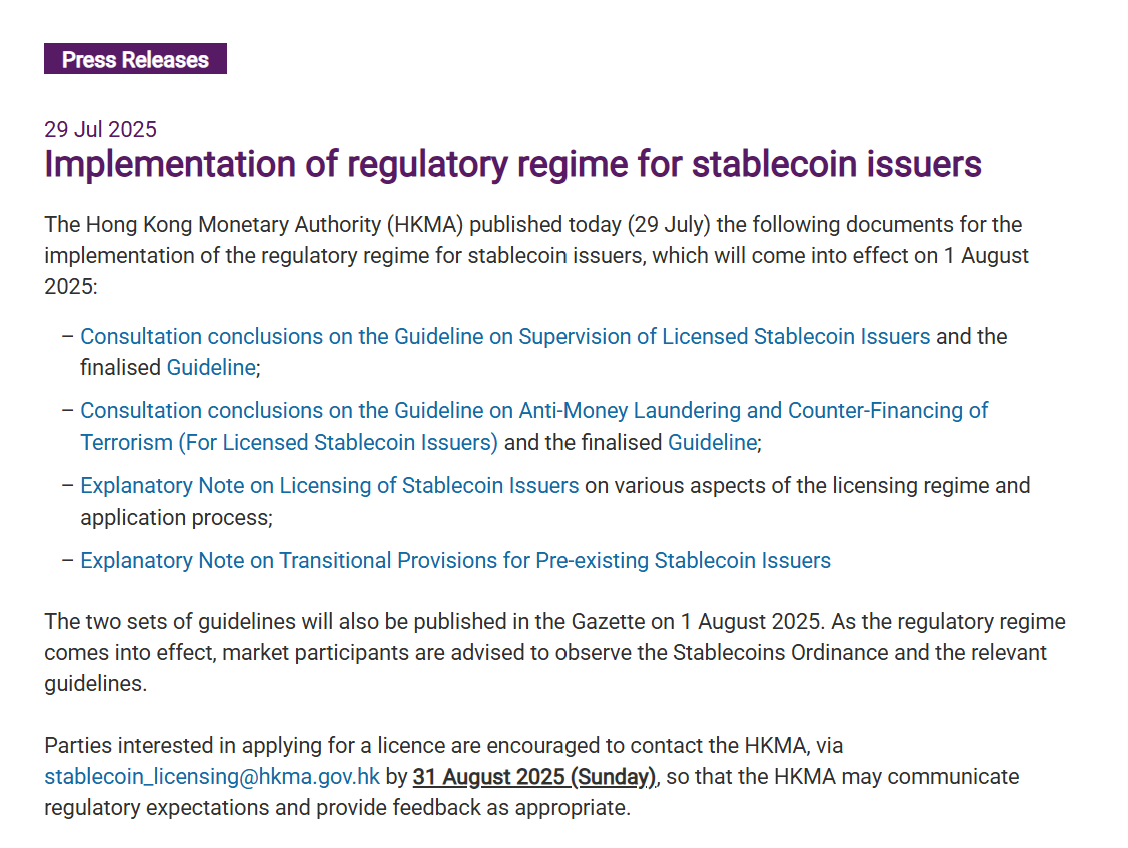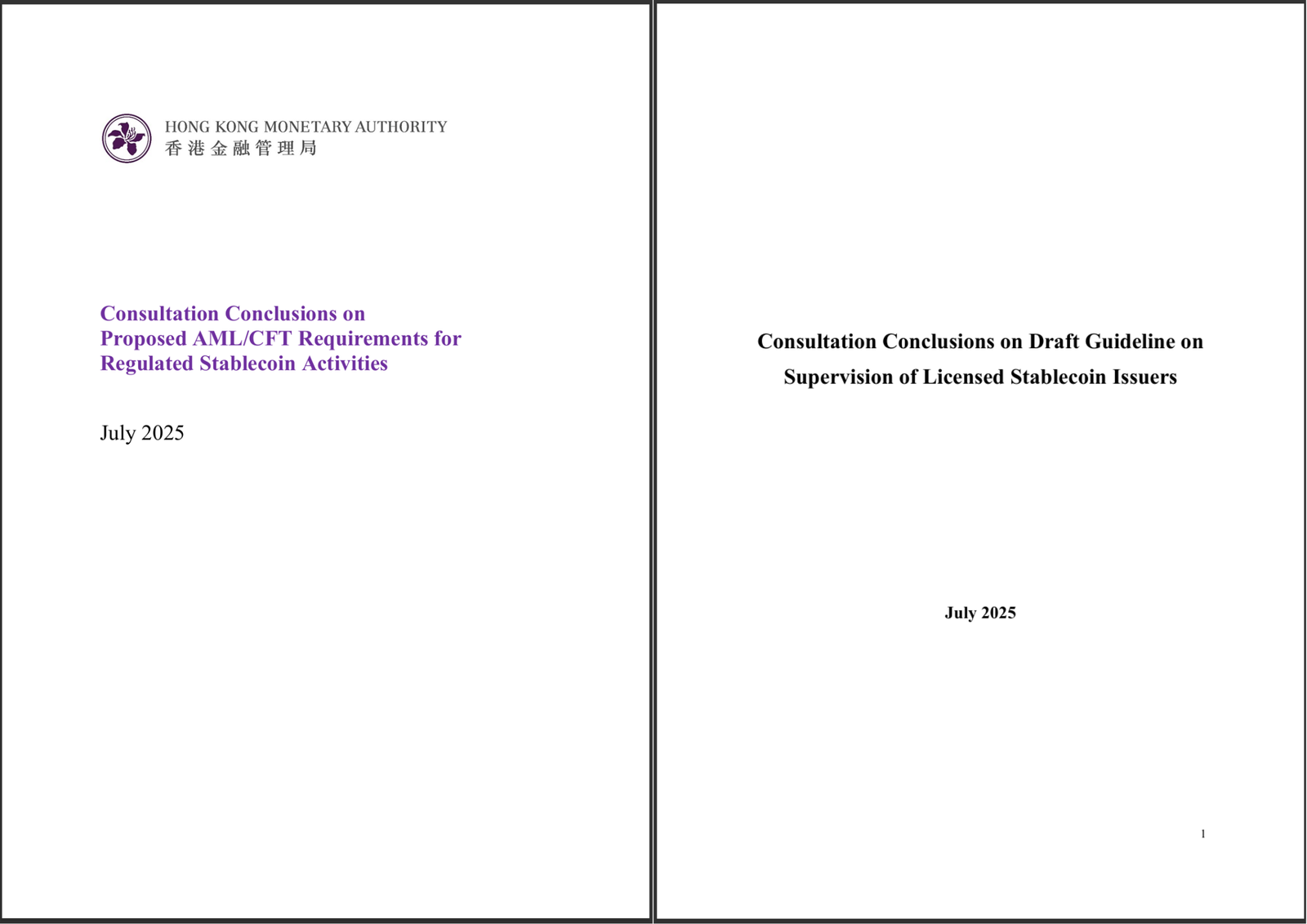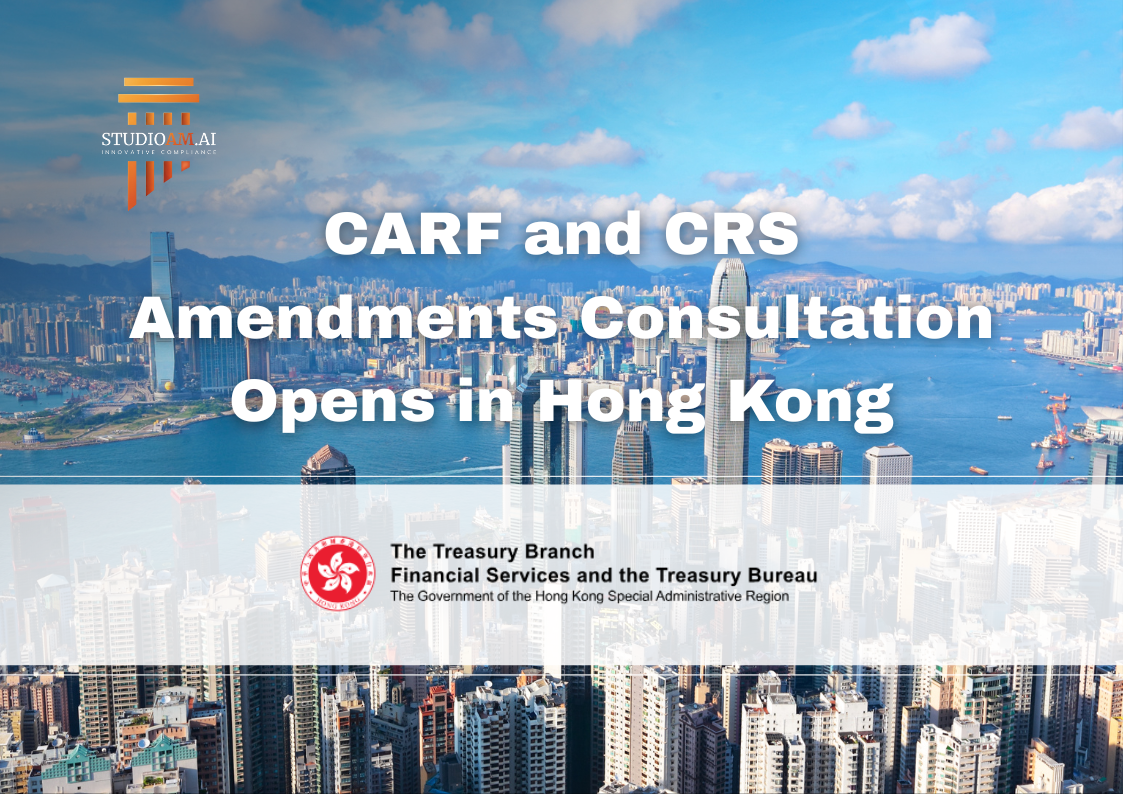
The All-Holder ID Problem: Analyzing the Toughest Compliance Hurdles in the HKMA's New Stablecoin Rules

The HKMA's new regime builds a fortress of compliance around stablecoin innovation.
Today marks a watershed moment for the digital asset landscape in Asia. The Hong Kong Monetary Authority (HKMA) has officially launched its comprehensive regulatory regime for stablecoin issuers, which will take effect on 1 August 2025. Accompanied by two meticulously detailed guidelines—one on Supervision and the other on Anti-Money Laundering and Counter-Financing of Terrorism (AML/CFT)—this framework is far more than a simple rulebook. It is a clear statement of intent, positioning Hong Kong as a jurisdiction that champions responsible innovation built on a foundation of robust investor protection and financial stability.
For us at Studio AM, and for our clients navigating the complexities of financial regulation, these documents demand careful study. They are not merely prescriptive; they are principles-based, revealing the regulator's deep thinking on the unique risks of the stablecoin ecosystem. From our perspective as seasoned compliance officers, let's dissect the critical insights that every prospective issuer and financial institution must grasp.

HKMA's new proposed consultation conclusions.
Insight 1: The Bedrock of Stability – Reserve Management & Corporate Governance
The HKMA’s core principle is that a stablecoin must be, above all else, stable. This philosophy permeates every aspect of the Supervision Guideline, creating a framework where holder confidence is paramount.
Key Compliance Pain Points:
- Full Backing is Just the Starting Point: While 1:1 backing of stablecoins with high-quality, liquid reserve assets is a non-negotiable minimum, the HKMA explicitly expects issuers to maintain "appropriate over-collateralisation". [2.2.1] This isn't just a suggestion; it's a required buffer to absorb market shocks and ensure redemption promises can be met even under stressed conditions. The consultation conclusions also clarified that for multi-jurisdictional issuance arrangements, this full-backing requirement applies to the global pool of reserves as a whole. [2.2.1]
- Strict Segregation and Qualified Custodians: Reserve assets must be held in a trust structure, legally segregated from the issuer's own assets to protect them against the issuer's creditors. [2.5.1, 2.5.2] Furthermore, these assets must be held by qualified custodians, defined as licensed banks in Hong Kong or other custodians acceptable to the HKMA. [2.5.4]
- Flexibility with High Hurdles (Currency Mismatch): In a nod to practical market needs, the HKMA will allow currency mismatches in reserve assets on a case-by-case basis, but only with prior written approval. [2.4.1] Applicants must provide legitimate reasons and demonstrate that their risk mitigation measures are robust enough to prevent transferring currency risk to stablecoin holders.
- Elevated Corporate Governance Standards: The regime elevates stablecoin issuers to a standard comparable with traditional financial institutions. A key requirement is that at least one-third of the Board members must be independent non-executive directors (INEDs). [7.1.3] This is a significant structural requirement designed to ensure objective oversight and challenge management.
Insight 2: Fort Knox Security Standards – Technology, Operations, and Orderly Exits
The guidelines reflect a sophisticated understanding of the technological vulnerabilities in the digital asset space. The operational resilience standards are exceptionally high, covering not just day-to-day operations but also worst-case scenarios.
Key Compliance Pain Points:
- Air-Gapped Environments are the Gold Standard: The HKMA is taking an uncompromising stance on private key security. "Significant Seeds and/or Private Keys" must be generated, stored, and used in a physically and logically isolated air-gapped environment. [6.5.7] The consultation conclusions pointedly state that most cloud-based HSMs may not meet this standard, a crucial detail for security architects. [2.6.3]
- Mandatory "What You See Is What You Sign" (WYSIWYS): In a direct response to the prevalence of front-end attacks in the crypto world, the HKMA has mandated WYSIWYS mechanisms. [2.6.6] This ensures that staff authorising transactions can clearly see and understand the semantic content of their actions, preventing them from unknowingly approving malicious transactions.
- A Plan for Failure: The Business Exit Plan: Every licensee must have a comprehensive, pre-prepared, and tested Business Exit Plan. [6.8.17] This plan must detail the orderly wind-down of operations, including procedures for liquidating reserve assets and ensuring all holders can redeem their stablecoins. This demonstrates a regulator focused on protecting consumers even if an issuer fails.
- Managing Secondary Market Risks (Market Makers): The HKMA is acutely aware of the risks posed by market makers, including intentional "de-pegging" events. Any issuer that engages them must have robust risk management and contractual arrangements in place to hold these entities accountable for misconduct. [2.3.3]
Insight 3: The AML Gauntlet – A New Paradigm of Responsibility
The AML/CFT Guideline is arguably the most operationally intensive part of the regime, extending an issuer's responsibility far beyond its immediate customer base.
Key Compliance Pain Points:
- The Bombshell: Identifying All Stablecoin Holders: This is the single most challenging requirement. The HKMA's default position is that, unless an issuer can prove its alternative measures are effective, the identity of each individual stablecoin holder must be verified. [5.11] This verification can be done by the licensee itself (even for non-customers), an appropriately supervised FI or VASP, or another reliable third party. The operational implications of this are immense.
- From Classification to Verification (Wallet Ownership): The final guideline pivots to a more direct requirement: an issuer must ascertain the ownership or control of every customer’s wallet. [4.36] The guideline suggests practical methods like micropayment tests or cryptographic message signing to achieve this, moving from an analytical challenge to a direct verification task.
- The Travel Rule's "Sunrise Issue" - No Excuses: The HKMA acknowledges the global challenge of inconsistent Travel Rule implementation. However, it offers no reprieve. Licensees must comply fully, which requires obtaining, holding, and transmitting originator and recipient information for transfers over HK$8,000. [6.5, 6.6]
The "All-Holder ID" requirement effectively makes the issuer a guardian of the entire on-chain ecosystem for its token, not just its direct issuance and redemption clients. This is a monumental shift from traditional AML frameworks.
The Path to Licensing: A High Bar and Tight Deadlines

The HKMA's press release outlines a clear path forward. Potential applicants are urged to make initial contact by 31 August 2025, and those who are "sufficiently ready" should submit formal applications by 30 September 2025. The entry barriers are substantial, including a minimum paid-up share capital of HK$25 million [5.1.1] and the ability to build and maintain the sophisticated compliance and technology infrastructure detailed above.
The HKMA has delivered a masterfully crafted regulatory framework. It is demanding, comprehensive, and deeply attuned to the specific risks of stablecoins. For prospective issuers, this is not a journey to be taken lightly. It demands significant capital, world-class technological and security expertise, and an unwavering commitment to a culture of compliance.



